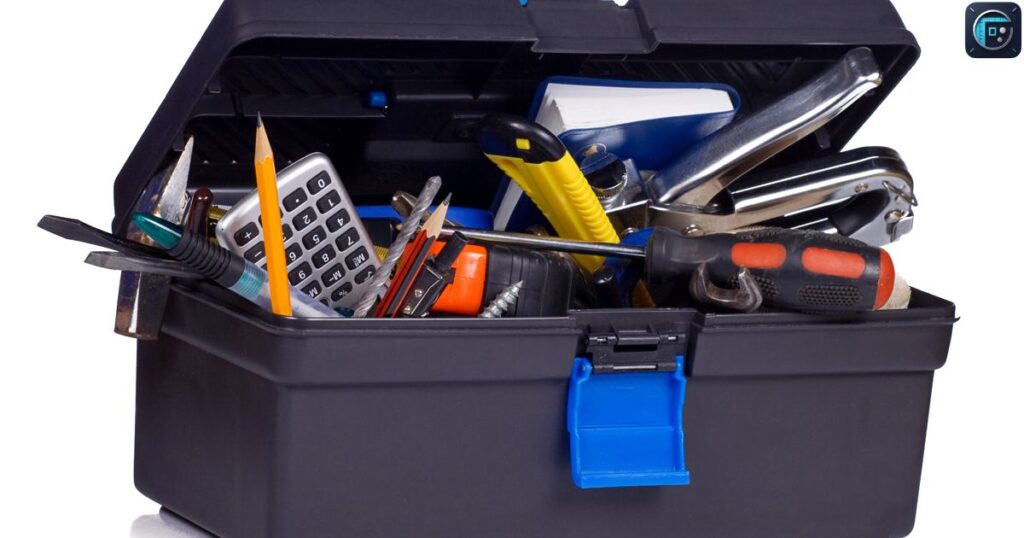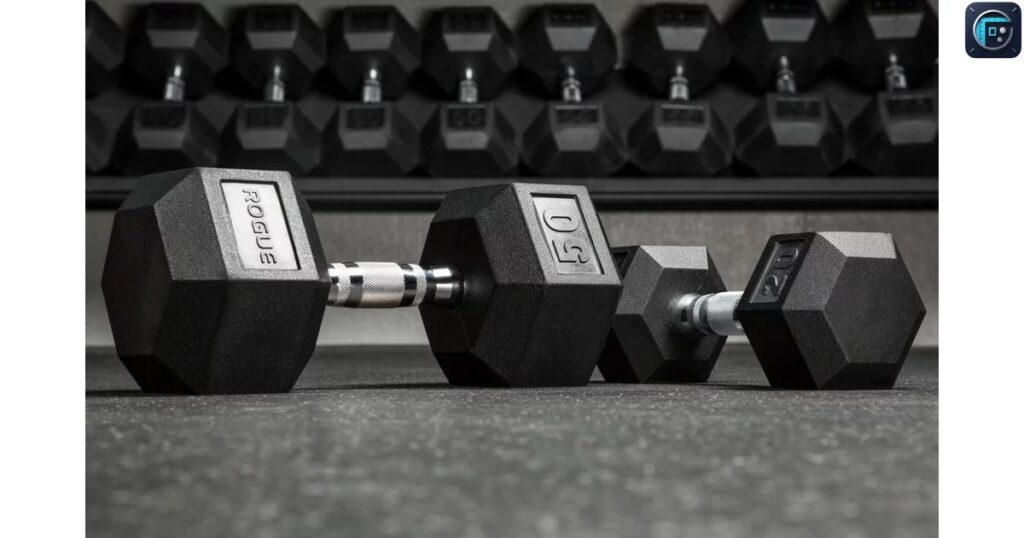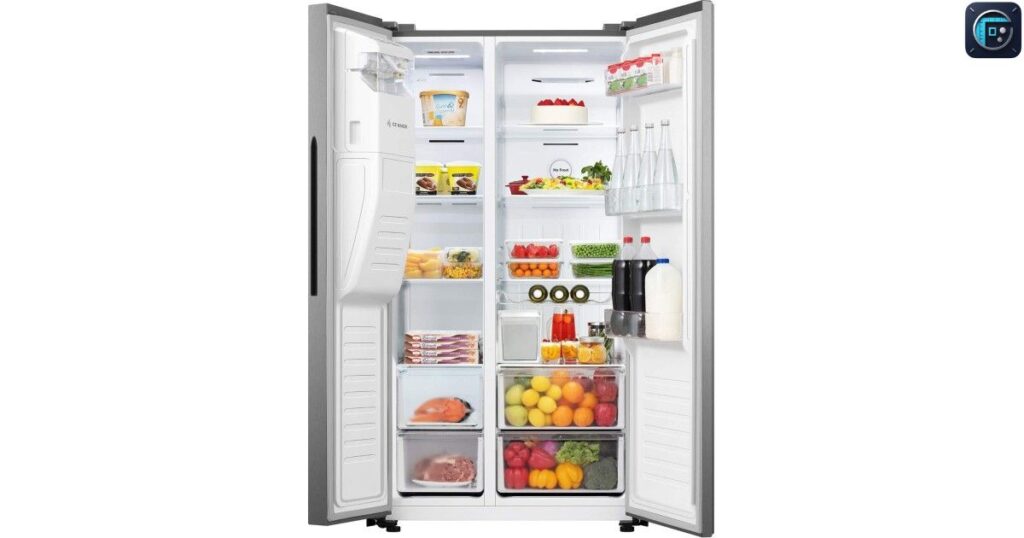50 kilograms might sound straightforward on paper, but it’s not always easy to picture in real life. Maybe you’re preparing for a move, planning a workout goal, or just curious about how heavy that number really feels.
The best way to understand it is by comparing it to everyday objects you already know – things you can see, lift, or imagine clearly. That’s exactly what we’ll explore here, turning an abstract weight into something you can visualize instantly.
How Much Is 50 Kilograms?
Fifty kilograms is a solid amount of weight – equal to about 110 pounds. You can imagine it as the heft of a large bag of cement, a healthy adult Labrador, or a sack of rice from a commercial kitchen. It’s heavy enough to need care when lifting but still manageable for most people with proper technique.
In everyday life, 50 kilograms often appears in bulk items, gym equipment, or appliances. It’s the kind of weight you’d notice when helping a friend move furniture or carrying groceries in wholesale quantities. Visualizing it through familiar examples makes the number much easier to grasp.
How Many Pounds Are 50 Kilograms?
Fifty kilograms converts to roughly 110.23 pounds. This means if you live in a country that uses the imperial system, you can think of it as a bit over 100 pounds – more than the average adult’s luggage limit on many airlines.
Knowing the pound equivalent helps when comparing weights across different systems. Whether you’re shipping goods, planning workouts, or cooking with international recipes, having both numbers in mind ensures you avoid any guesswork or costly mistakes.
14 Common Household Items That Are 50 Kilograms
It can be tricky to picture 50 kg, but comparing it to everyday items makes it much easier to understand. Here are fourteen examples you might recognise.
| 📦 Item | 📏 Actual Measurement |
| 🐙 North Pacific Giant Octopus | Weighs around 50 kg when fully grown |
| 🚜 Motorized Lawn Mower | Standard gas-powered models weigh about 50 kg |
| 🚽 One Piece Toilet | A ceramic unit can weigh close to 50 kg |
| 🦡 Five European Badgers | Together, their combined weight is about 50 kg |
| 🐕 Adult German Shepherd | A large male can reach roughly 50 kg |
| 🏗️ Bag Of Cement | Industrial bags often weigh exactly 50 kg |
| 🏃♂️ Home Treadmill | Mid-range folding treadmills weigh about 50 kg |
| 🛠️ Fully Loaded Tool Chest | Packed with tools, it can reach 50 kg |
| 🐐 Large Goat | Many mature goats weigh near 50 kg |
| 🏋️ Origin Pro Dumbbells | A set can total up to 50 kg |
| 🧊 Small Refrigerator | Compact models often weigh around 50 kg |
| 📦 Small Cargo Pallet | When loaded, it can total 50 kg |
| 🌾 Bale of Hay | Standard square bales can weigh about 50 kg |
| 🚲 A Heavier Electric Bicycle | With battery and frame, some weigh 50 kg |
North Pacific Giant Octopus

The North Pacific giant octopus is one of the largest octopus species in the world, and mature adults often tip the scales at around 50 kilograms. That’s the combined weight of a heavy punching bag and a full sack of rice. Seeing such a creature up close instantly changes how you imagine that weight – it’s not just heavy, it’s alive, fluid, and powerful.
In its natural habitat, this massive cephalopod plays a key role in the marine food chain, hunting crabs, fish, and even smaller sharks. Divers and marine biologists often need to prepare carefully before interacting with them, as their size and strength can be surprising underwater.
Historically, the species has fascinated scientists and storytellers alike. Its impressive weight and span have fueled legends of “sea monsters” among sailors. In modern marine studies, the octopus’s large size serves as a marker of a healthy ecosystem, making it an important species to monitor for ocean conservation efforts.
Read More <<>>> How Much Is 30 Kg
One-Piece Toilet

A standard ceramic one-piece toilet can weigh close to 50 kilograms, especially models designed with dense porcelain for durability. That’s a weight most people don’t expect from something as compact as a bathroom fixture. Lifting one without help can quickly reveal just how solid and heavy the material is.
In everyday situations, that weight matters during installation and transport. Plumbers often need a dolly or a second person to maneuver it safely into place without damaging the floor or the unit itself. Its heft also helps keep it firmly anchored, reducing movement once installed.
Historically, the shift from heavier two-piece toilets to sleeker one-piece designs brought both style and practicality. The solid build provides better sealing and fewer leak points, and the weight contributes to its stability over decades of use – a quiet but important factor in long-term bathroom planning.
Five European Badgers

An average adult European badger weighs around 10 kilograms, so a group of five adds up to roughly 50 kilograms. Imagining that many badgers together helps turn an abstract number into something more vivid – a bundle of furry, muscular bodies with surprising strength.
In the wild, badgers are known for their digging abilities and strong build, which makes their collective weight even more impressive. Farmers and wildlife watchers often gauge their size to understand habitat health, as a healthy badger population can indicate a thriving ecosystem.
Culturally, badgers have appeared in European folklore as clever, resilient animals. Thinking of their combined weight is not just a numbers exercise – it connects to centuries of rural stories, conservation work, and the reality of how much living, breathing 50 kg can be in the animal kingdom.
Adult German Shepherd

A large male German Shepherd can weigh close to 50 kilograms, especially those bred for work or protection roles. Standing beside one gives you a clear sense of just how substantial that weight is – it’s not just size, but solid muscle and bone.
In everyday life, this weight matters for handlers, trainers, and pet owners. Moving or lifting a fully grown German Shepherd requires strength, whether it’s helping them into a vehicle or assisting during veterinary visits. Their build allows them to perform demanding tasks in police work, search and rescue, and guarding duties.
Historically, German Shepherds have been prized for their balance of strength, intelligence, and agility. Their heavier frame in working lines reflects decades of breeding for stamina and capability, making them one of the most respected and versatile service dog breeds in the world.
Bag of Cement

A standard large bag of cement in many countries weighs around 50 kilograms, making it one of the most common benchmarks for this amount of weight. Pick one up, and you immediately feel its dense, unyielding mass – a perfect real-world example of how substantial 50 kg really is.
In the construction industry, this weight is the norm for bulk packaging because it balances efficiency and handling. Workers can transport it with proper lifting techniques, and its size ensures enough material for small to medium projects like laying bricks or pouring a section of concrete.
Historically, cement packaging has stayed at this weight for decades, partly due to labor safety standards and practicality in shipping. Its consistency makes planning easier for builders and suppliers, as they can calculate projects and transport loads with predictable accuracy.
Home Treadmill

Many home treadmills, especially mid-range models with sturdy frames and built-in motors, weigh around 50 kilograms. This weight comes from the combination of a solid running deck, durable motor components, and safety features that keep the machine stable during workouts.
In home fitness setups, knowing the exact weight matters for delivery and placement. A 50-kilogram treadmill is heavy enough to require two people to move safely, yet still light enough to be set up in an upstairs room without stressing the floor structure. Its stability also means it won’t wobble or shift during intense runs.
Over the years, treadmill designs have evolved from heavy, industrial gym models to compact home-friendly versions, but the weight for reliable performance hasn’t changed much. The balance between portability and durability remains essential, making the 50-kilogram range a sweet spot for long-lasting and effective fitness equipment.
Fully Loaded Tool Chest

A fully stocked, mid-sized tool chest can weigh close to 50 kilograms once filled with wrenches, sockets, hammers, and power tools. The metal frame alone adds substantial heft, but it’s the dense steel tools inside that push it into this weight range. Even a quick attempt to lift one will remind you how concentrated and compact that much weight can be.
In garages, workshops, and professional repair settings, this weight affects mobility and storage. A tool chest at this size is often mounted on wheels, allowing mechanics to roll it between stations without strain. Its stability prevents tipping, even when drawers are extended and heavily loaded.
From a practical standpoint, the weight of a fully loaded chest reflects decades of evolving tool design and material strength. Mechanics often build their collections over time, carefully balancing portability with capacity. The result is a workhorse of the trade – solid, reliable, and heavy enough to hold a lifetime’s worth of essential equipment.
Large Goat

A mature large goat, such as a Boer or Kiko breed, can weigh around 50 kilograms when fully grown. Standing beside one gives you an immediate sense of that weight – a solid, living mix of muscle, bone, and energy that feels very different from lifting an inanimate object of the same mass.
In farming, this size is ideal for both meat and breeding purposes. Farmers often monitor a goat’s weight closely, as reaching this range signals good health and market readiness. Handling and transporting an animal of this size requires skill to ensure safety for both the goat and the handler.
Historically, goats have been valued for their adaptability and productivity in agriculture. In many cultures, a goat of this weight is a significant investment, representing a balance between feed efficiency and yield. This makes a large 50-kilogram goat not only a physical example of the measurement but also a symbol of rural livelihood.
Origin Pro Dumbbells

The 50-kilogram Origin Pro dumbbell is a heavyweight in every sense, built for lifters who train at an elite level. Its compact size can be deceiving, but once you grip it, you quickly realize how concentrated and unforgiving that much steel feels in your hands.
In gyms, these dumbbells are typically reserved for advanced strength routines like heavy bench presses, bent-over rows, and floor pulls. Their fixed weight saves time between sets, allowing athletes to focus entirely on form and output without adjusting plates.
From a design perspective, Origin Pro dumbbells use precision-forged steel and carefully balanced heads to ensure stability during intense lifts. This style of dumbbell represents decades of refinement in free-weight equipment, offering durability and performance for those pushing their limits in the weight room.
Small Refrigerator

A compact household refrigerator, often found in studio apartments or dorm rooms, can weigh close to 50 kilograms. Despite its smaller size compared to full kitchen models, the combination of insulated panels, compressor, and internal shelving adds up quickly on the scale.
In everyday use, this type of fridge is perfect for spaces where floor area is limited but cooling needs are still important. Its weight matters for delivery and relocation – heavy enough to stay stable during operation, yet manageable for two people to move without specialized equipment.
Over time, refrigerator manufacturing has shifted toward lighter materials, but small models still hover around this weight for structural integrity. That balance between portability and durability ensures they can handle years of constant cycling without tipping or warping, making them a reliable choice for tight living spaces.
Small Cargo Pallet

A small cargo pallet loaded with goods can easily reach around 50 kilograms, especially when holding compact but dense items like canned food, tiles, or hardware. The weight is distributed evenly across the platform, making it stable yet still heavy to move without mechanical assistance.
In warehouses and shipping yards, this size is common for smaller freight orders that don’t require full-sized pallets. Its manageable weight allows for manual handling with pallet jacks or by a two-person team, keeping operations efficient without overloading workers.
Palletized shipping revolutionized logistics in the 20th century, standardizing how goods are stored and transported. A 50-kilogram load on a small pallet offers the flexibility to combine multiple shipments while keeping weight under common handling limits – a balance between safety, cost, and space efficiency.
Motorized Lawn Mower

A standard walk-behind motorized lawn mower with a full fuel tank and sturdy metal deck can weigh around 50 kilograms. While it’s designed to be pushed easily thanks to its wheels, lifting it onto a truck or up steps quickly reveals the true heft of the machine.
For homeowners, this weight provides stability during mowing, preventing the mower from bouncing over uneven ground. Landscapers also rely on this balance of mass and maneuverability, as it allows for precise cutting without the machine tipping or veering off course.
From a design perspective, the weight comes from the steel frame, engine components, and cutting deck. Early gasoline mowers were even heavier, but modern models have optimized materials while keeping enough weight for safe operation – a compromise that keeps lawns looking neat without sacrificing control.
Bale of Hay

A tightly packed rectangular bale of hay often weighs about 50 kilograms, depending on the type of grass and moisture content. At first glance, it might look light and fluffy, but anyone who has lifted one knows it’s compacted into a surprisingly dense block.
On farms, this size bale is common because it strikes a balance between being large enough to feed multiple animals and still manageable for manual handling. Farmers can stack them for storage, load them onto trailers, and distribute them in the field without needing heavy machinery.
The tradition of baling hay in this weight range goes back decades, aligning with labor capabilities before widespread mechanization. Even today, keeping bales at this manageable size ensures flexibility in both small-scale family farms and larger agricultural operations, preserving a practical standard that works across generations.
A Heavier Electric Bicycle

A robust electric bicycle with a steel frame, integrated battery, and motor can weigh close to 50 kilograms, especially in cargo or long-range models. While it rides smoothly thanks to pedal assist, lifting or carrying it instantly reveals the true mass packed into its design.
For commuters, this weight brings benefits in stability and durability, allowing the bike to handle higher speeds and heavier loads without wobbling. Delivery riders also favor these heavier builds for their ability to carry groceries, parcels, or even small tools across urban areas.
From a technical standpoint, the weight comes from combining reinforced frames with large-capacity lithium-ion batteries and hub motors. Early e-bikes were often heavier, but advances in materials have kept modern models sturdy without adding unnecessary bulk – a balance that makes them both practical and long-lasting.
Convert 3 Kilograms to Common Units
Converted Values: Here are the most useful everyday conversions for 3 kilograms in different measurement systems.
Converted Values:
- Grams: 3,000 g
- Milligrams: 3,000,000 mg
- Metric Tonnes: 0.003 t
- Pounds: 6.6139 lbs
- Ounces: 105.822 oz
- Stones: 0.4724 st
Practical Applications of 50 Kilograms Weight Understanding
Understanding what 50 kilograms feels like can be surprisingly useful in daily life. For movers, it’s a common weight for boxes of books, furniture pieces, or appliances. For athletes, it can represent a benchmark in strength training, especially in powerlifting or Olympic weightlifting.
In trade and business, 50 kg is often used as a standard packaging weight – from agricultural goods like coffee beans to industrial materials like cement. When you know this weight well, you can make better decisions about transport, handling, and storage.
FAQ’s
Is 50 kg a good weight?
Whether 50 kilograms is considered a healthy weight depends on a person’s height, age, body composition, and overall health. A healthcare professional can provide the most accurate guidance based on individual circumstances.
What is 50 kilograms in weight?
Fifty kilograms equals approximately 110.23 pounds. This conversion is useful when comparing measurements between metric and imperial systems.
What is 50kg in stones and pounds?
Fifty kilograms is about 7 stone 12 pounds. This is a common conversion for those using the UK measurement system.
What size is 50 kilos?
The size associated with this weight varies greatly depending on body shape and height. Two people can have the same weight but wear different clothing sizes due to differences in muscle, fat, and frame.
What age is 50 kg?
There is no specific age for reaching this weight, as it can occur in childhood, adolescence, or adulthood depending on growth patterns, genetics, and lifestyle.
Conclusion
Understanding what 50 kilograms feels like becomes much easier when it is connected to real objects we see or use in daily life. From animals and tools to vehicles and equipment, each example paints a clear picture of how substantial this weight truly is.
This guide has taken an abstract number and turned it into something you can clearly visualize. Now the next time you hear 50 kg, you can instantly relate it to something familiar and tangible. It is a practical way to turn a measurement into a real experience.


